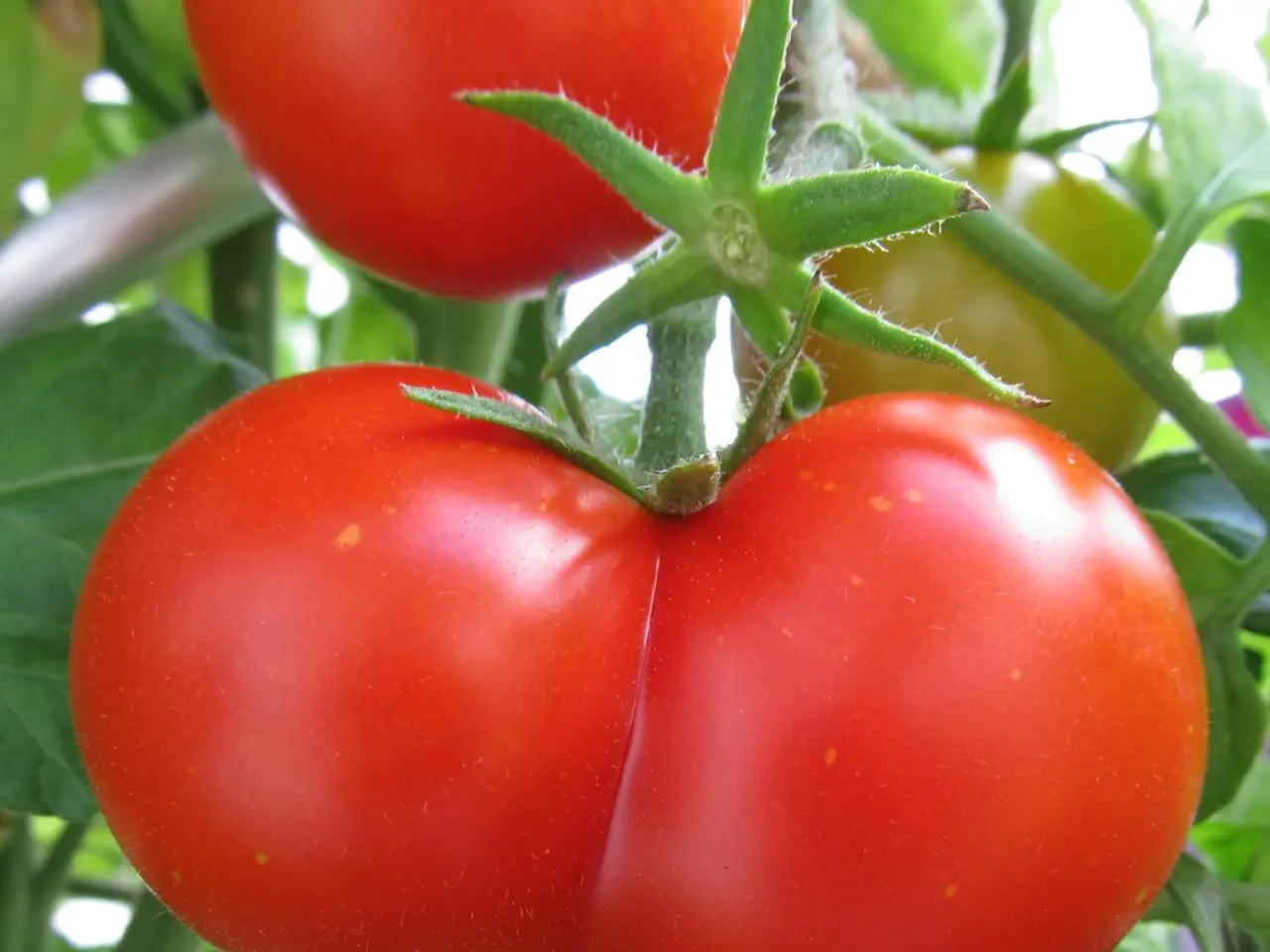Enhancing Tomato Growth: Guidelines for Employing Tomato Plant Fertilizers
In the world of tomato gardening, providing the right nutrition is key to growing healthy, productive plants. Here's a comprehensive guide to help you understand the essential nutrients needed and the best ways to fertilize your tomato plants.
Tomatoes require three primary nutrients: nitrogen (N), phosphorus (P), and potassium (K), often referred to as NPK. A starter food high in phosphorus, such as 5-10-5, should be incorporated at planting time to spur cell formation, root growth, and shoot formation.
When it comes to soil, a balanced or high-nitrogen soil may require a fertilizer with a lower nitrogen content and a higher phosphorus content. Organic tomato fertilizers like well-rotted manure or compost can be used and worked into the soil several weeks before planting.
However, it's important to note that using too much nitrogen can result in a lush, green plant with very few tomatoes. To avoid this, it's best to follow the recommended fertilization for tomato plants, which includes mixing organic horn fertilizer like hornmeal or horn grit into the soil before planting and applying compost in spring as a base fertilizer. Subsequent liquid fertilization with a commercial fertilizer is advised if leaves turn pale green.
Other essential nutrients for tomatoes include calcium, magnesium, and trace elements. Calcium nitrate, applied several weeks after planting, helps form strong cell walls in tomato fruit. Epsom salts provide magnesium to prevent yellowing leaves in tomatoes. Kelp meal is another source of potassium for tomatoes.
Chopped banana peels can also provide a boost of potassium for tomatoes, while coffee grounds, containing 20% nitrogen, are a slow-release source for leaf development in tomatoes. Wood ashes are another good source of potassium for tomatoes.
Remember, it's crucial to perform a pH test before planting and amend the soil if necessary with lime at least 3 months prior. An ideal soil pH for tomatoes ranges from 5.5 to 7.
When fertilizing, it's essential to water the tomato plant first to avoid burn. Fertilizers list three numbers on the label, indicating the ratio by weight of each of the 3 macronutrients: nitrogen, phosphorus, and potassium.
Lastly, be mindful of where you apply the fertilizer. Fertilizing tomato plants too close to the base can result in fertilizer running off and burning the plant. Instead, spread the fertilizer evenly around the plant, keeping it away from the stem.
With these tips in mind, you're now equipped to provide the perfect nutritional environment for your tomato plants to thrive. Happy gardening!




